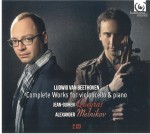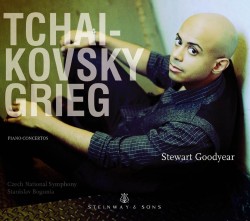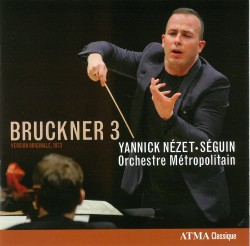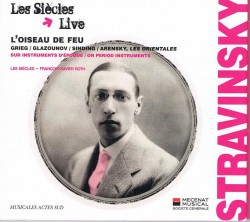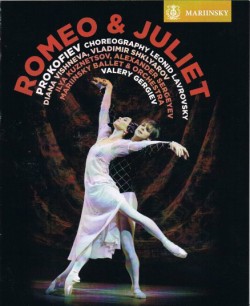Chopin – Complete Mazurkas
Janina Fialkowska
ATMA ACD2 2682
Chopin – 24 Preludes
Alain Lefèvre
Analekta AN 2 9287
Chopin – Preludes
Ingrid Fliter
Linn Records CRD 475
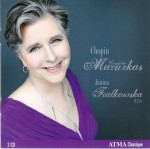 In the ridiculous horror-parody film, Attack of the Killer Tomatoes, the bloodthirsty veggies can only be defeated when shown the sheet music of Donny Osmond. That makes them explode in fear. In the real world, the truly scary scores are those of Frédéric Chopin. The sheer complexity of the writing, the crowded added lines and bars bursting with fractal notes are enough to send a casual, sight-reading pianist scrambling. Chopin’s music requires a lot of great technique, to be sure. But technique alone is not enough – the best example of that is the pianist that this reviewer calls Bang Bang in obvious reference to his overuse of the forte pedal. Lots of bravado there, but very little heart and soul.
In the ridiculous horror-parody film, Attack of the Killer Tomatoes, the bloodthirsty veggies can only be defeated when shown the sheet music of Donny Osmond. That makes them explode in fear. In the real world, the truly scary scores are those of Frédéric Chopin. The sheer complexity of the writing, the crowded added lines and bars bursting with fractal notes are enough to send a casual, sight-reading pianist scrambling. Chopin’s music requires a lot of great technique, to be sure. But technique alone is not enough – the best example of that is the pianist that this reviewer calls Bang Bang in obvious reference to his overuse of the forte pedal. Lots of bravado there, but very little heart and soul.
 In fact, I would venture to say that the music of Chopin is a lot like wine – it is a result of the terroir, the quality of grapes and the winemaking technique. As for terroir, there is something magical when one hears that music at the Royal Baths Gardens in Warsaw, near the statue of Chopin (wrapped by two bronze weeping willows) or at Chopin’s family cottage in Zelazowa Wola, where his alleged piano is still in working order. Alas, that’s a pleasure not accorded to many. Still, there is something uncanny in the ability of Polish pianists to re-capture that ever-important terroir. Then there are the grapes – the beauty of Chopin’s writing was that no piece, no matter how slight, could be considered minor. The Minute Waltz, the Preludes, the Mazurkas or songs, regardless of length, command attention equal to that of the Piano Concerti. If all his scores are difficult, then the Mazurkas are particularly so, as their intuitive, internal rhythm has tripped up many a virtuoso. There is a reason, after all, for a separate award category for Mazurka interpretation at the Chopin International Piano Competition – a prize so elusive, that on several occasions it was not awarded. Finally we come to the winemaking technique. All three of the pianists in this review are no amateurs and their technique can be vouched for by the international prizes they have garnered – Ingrid Fliter was a silver medalist of the 2000 Chopin Piano Competition, Janina Fialkowska won the inaugural 1974 Arthur Rubinstein competition and Alain Lefèvre scored a JUNO, Prix Opus and ten (That’s ten!) Prix Felix. So, how do they fare?
In fact, I would venture to say that the music of Chopin is a lot like wine – it is a result of the terroir, the quality of grapes and the winemaking technique. As for terroir, there is something magical when one hears that music at the Royal Baths Gardens in Warsaw, near the statue of Chopin (wrapped by two bronze weeping willows) or at Chopin’s family cottage in Zelazowa Wola, where his alleged piano is still in working order. Alas, that’s a pleasure not accorded to many. Still, there is something uncanny in the ability of Polish pianists to re-capture that ever-important terroir. Then there are the grapes – the beauty of Chopin’s writing was that no piece, no matter how slight, could be considered minor. The Minute Waltz, the Preludes, the Mazurkas or songs, regardless of length, command attention equal to that of the Piano Concerti. If all his scores are difficult, then the Mazurkas are particularly so, as their intuitive, internal rhythm has tripped up many a virtuoso. There is a reason, after all, for a separate award category for Mazurka interpretation at the Chopin International Piano Competition – a prize so elusive, that on several occasions it was not awarded. Finally we come to the winemaking technique. All three of the pianists in this review are no amateurs and their technique can be vouched for by the international prizes they have garnered – Ingrid Fliter was a silver medalist of the 2000 Chopin Piano Competition, Janina Fialkowska won the inaugural 1974 Arthur Rubinstein competition and Alain Lefèvre scored a JUNO, Prix Opus and ten (That’s ten!) Prix Felix. So, how do they fare?
All three discs are a true delight – so any criticism that follows will be merely an exercise in splitting hairs.
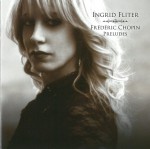 If I were to pick the weakest link, it would be the Argentine-born Ingrid Fliter. Though some would argue that hers is the finest technique of the three, her approach to Chopin is almost too conservative and because of that it seems fearful. No room for fear when playing Chopin – this is a counterphobe’s territory. I would also add that despite her triumph at the Warsaw competition, her recording pays the least homage to the actual terroir of the music. A notable exception is the “Raindrop” Prelude – possibly the best performance I have heard in years.
If I were to pick the weakest link, it would be the Argentine-born Ingrid Fliter. Though some would argue that hers is the finest technique of the three, her approach to Chopin is almost too conservative and because of that it seems fearful. No room for fear when playing Chopin – this is a counterphobe’s territory. I would also add that despite her triumph at the Warsaw competition, her recording pays the least homage to the actual terroir of the music. A notable exception is the “Raindrop” Prelude – possibly the best performance I have heard in years.
Lefèvre is fearless and bold, taking no prisoners in his approach and perhaps losing some clarity in the process. However, by leading with the heart, you cannot lose when playing Chopin.
Finally, Fialkowska is in fine form, proving once again that it is the combination of emotional presence, technique and experience or the grapes, terroir and winemaking, that delivers the stunning results. Hers is the crown of Mazurkas, those frustrating, intimidating gems that Schumann called “cannons under flowers” referring to their potent political message dressed as “small” piano pieces.
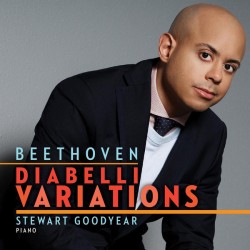 Beethoven – Diabelli Variations
Beethoven – Diabelli Variations

